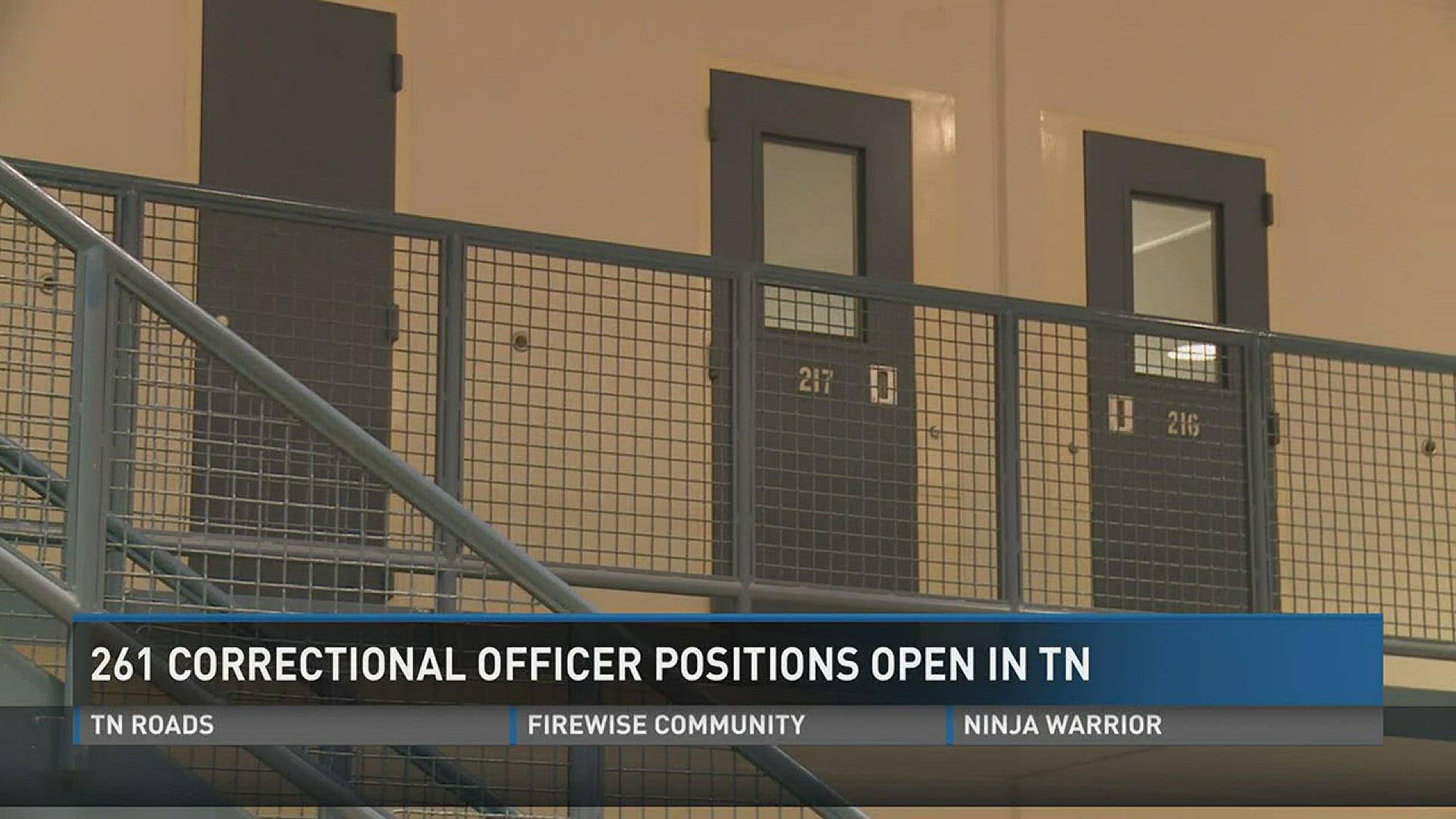More than 250 correctional officer positions within the Tennessee Department of Correction are vacant, representing 10.7 percent of the workforce.
But department leaders are optimistic ongoing recruitment incentives and an updated payment structure will help find and keep officers.
The 261 vacant positions at the 10 public prisons in the state represent only correctional officer posts, not the entirety of the nearly 6,000-person department.
Department Commissioner Tony Parker characterized the vacancy rate as "a little high."
"In some of the areas where you have a lot of industry, it’s difficult to hire people and keep them when there are other jobs available," Parker said.
"We’ve found when the economy's good, the unemployment rate is down; it’s hard to hire people in corrections."
Understaffing at state prisons is not a new issue, with the department and Gov. Bill Haslam previously laying the blame on an improving economy. In the past, officers, inmates and their families said a lack of staff leads to prisons that are less safe.
With 74 of the roughly 371 correctional officer posts empty, West Tennessee State Penitentiary — which also houses the Women’s Therapeutic Residential Center — has a 20 percent vacancy rate, the highest in the state.
Before the opening of the Trousdale Turner Correctional Center private prison in December 2015, West Tennessee was historically one of the more dangerous prisons and persistently understaffed.
Turney Center Industrial Complex, where an officer was taken hostage amid a "disturbance" in April, has the second-highest vacancy rate. Of the roughly 230 officer jobs, 42 are empty.
A little less than 15 percent of the officer jobs at Northwest Correctional Complex are empty, representing 50 of the 343 correctional officer posts at the Tiptonville prison.
As of May 31, those three prisons housed nearly 5,700 inmates, or more than 25 percent of all inmates in Tennessee.
Parker noted the department continues to offer monetary bonuses to entice new employees and to encourage current officers to recruit colleagues.
While those bonuses are relatively small — the sign-on bonus is about $600 — a change to the way officers are paid should provide staff with more money on a consistent basis.
In the past, the department moved away from a traditional 40-hour workweek to a 28-day cycle. The shift delayed overtime payments for officers and resulted in less overtime pay in general.
Facing substantial pushback from officers and the Tennessee State Employee Association, the department has since switched back to a 40-hour work week or a 14-day, 80-hour schedule.
"The facilities have all been in favor of this. We've had basically no negative feedback whatsoever," Parker said.
TSEA Executive Director Randy Stamps thanked Parker for listening to officers and changing the schedule.
"We consider this a victory for state employees. However, this victory does not mean that TSEA will rest in efforts to improve working conditions in our correction facilities. We will continue to pursue needed changes and improvements," Stamps said.
Parker said the schedule changes should take effect some time in the fall.
Vacancy rate at each public prison in Tennessee
Prison Vacancy rate Total vacancies
West Tennessee State Penitentiary 19.9% 74
Turney Center Industrial Complex 18.3% 42
Northwest Correctional Complex 14.6% 50
Tennessee Prison for Women 14% 18
DeBerry Special Needs Facility 12.1% 23
Mark Luttrell Correctional Complex 5.8% 4
Riverbend Maximum Security Institute 8.7% 18
Northeast Correctional Complex 4.4% 12
Bledsoe County Correctional Complex 4% 15
Morgan County Correctional Complex 1.4% 5
Totals: 10.7% 261
Source: Tennessee Department of Correction

